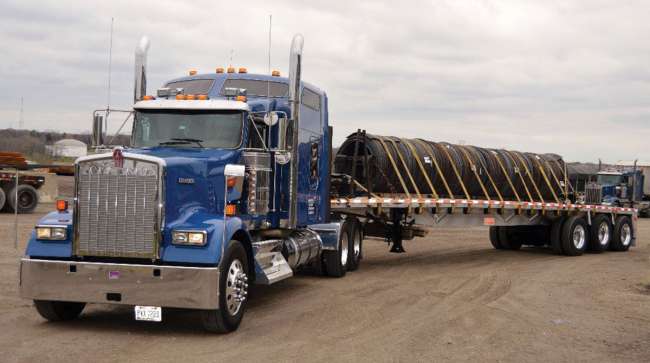Senior Reporter
Tonnage Slips 1.8% in August

Truck tonnage showed a slight downturn of 1.8% in August, according to American Trucking Associations’ advanced seasonally adjusted for-hire Truck Tonnage Index.
The August 2018 drop followed an increase of 1.9% in July. The index equaled 112.9, down from July’s 115.
Through the first eight months, however, the tonnage index is up 7.6%; that is double the 3.8% gain for all of 2017.
When comparing August 2018 with the same period in 2017, the tonnage index was up 4.5% — down from July’s 8.6% year-over-year increase.

Costello
“Truck freight remained solid in August despite the monthly decline,” said Bob Costello, chief economist at ATA. “However, the year-over-year increase was the smallest since July 2017. The deceleration in the year-over-year increases has begun due to more difficult year-over-year comparisons.”
Costello said it was a year ago when freight began to surge. “We should all expect smaller year-over-year gains going forward than we witnessed over the last year.”
Trucking accounts for 70.6% of tonnage carried by all modes of domestic freight transportation, including manufactured and retail goods.
ATA calculates the tonnage index based on surveys of its membership. ATA said trucks hauled 10.77 billion tons of freight in 2017 and motor carriers collected $700.1 billion, or 79.3% of revenue earned by transport modes.
When compared with earlier this spring and summer, spot freight rates have slipped somewhat, but they still remain considerably higher than the same period in 2017.
Load board operator DAT Solutions reported its Sept. 15 total spot rate is $2.15 per mile for average van rates nationally, down from June’s all-time high of $2.31 a mile. At the end of September 2017, the rate was $1.97 a mile.
“Rates peaked seasonally in June, at $2.31 per mile, and the third quarter is usually quieter than the second quarter, so the seasonal decline was expected,” DAT Market Analyst Peggy Dorf told Transport Topics. “That said, current rates are higher than they were at any time in 2017 — possibly ever.”
Another measure of activity, the Cass Freight Index, said in its August summary that from both a volume and a pricing perspective, the U.S. freight economy continues to be extraordinarily strong.
“The first eight months of 2018 have clearly signaled that, barring a negative ‘shock event,’ 2018 will be an extraordinarily strong year for transportation and the economy,” according to Cass.
The Cass Shipments Index in August was 1.227, up 6% year-over-year when it was 1.158 in August 2017.
“Demand is exceeding capacity in most modes of transportation by a significant margin. In turn, pricing power has erupted in those modes to levels that continue to spark overall inflationary concerns in the broader economy,” according to Cass.
Long-term inflationary pressure is not a worry, Cass said, because technology continues to provide multiple ways to increase asset utilization and price discovery in all parts of the economy, especially in transportation. And, there are more signs that electronic logging devices initially hurt the capacity/utilization of truckers, particularly small truckers.
“But many of the truckers most adversely affected are now beginning to get some of the loss in utilization back, especially in the dry van and reefer (temperature control) marketplaces,” Cass said. “The flatbed segment of trucking, however, is continuing to struggle with productivity after the adoption of ELDs.”




